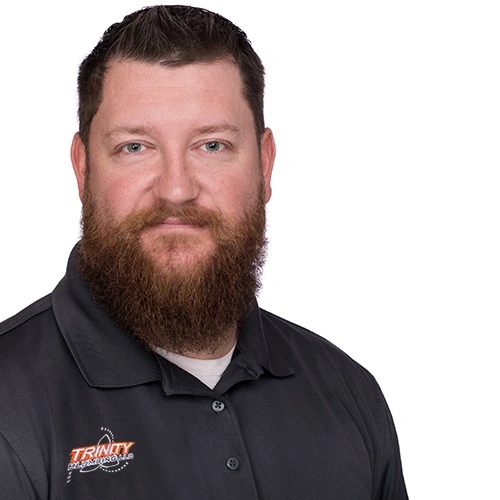All plumbing systems develop clogs over time, there’s really just no way around it. One of the most common plumbing problems we get calls on is when there is a slow-moving or clogged drain in the bathroom sink. Fortunately, a bathroom sink clog is usually a simple fix and all you need to get the sink draining properly again is a little time and the right tools.
What Causes a Bathroom Sink to Clog?
Before we look at how to fix a clogged drain in the bathroom, let’s examine what typically causes the clog in the first place.
Most bathroom sink clogs result from a combination of hair, dirt, and skin flakes that bind with the gooey soap scum that accumulates on the walls of the drain pipes or gets caught on the pivot rod or stopper of the drain.
Since this is the bathroom sink that we are talking about, you can also add in things like toothpaste, hand lotions, and even phlegm. This combination of gunk collects bacteria on it, which is why when you pull the stopper out of the sink there is an accumulation of what looks like black slime on it.
Trust us, it’s not a pretty sight!
How to Fix a Bathroom Sink Clog
Step #1 – Remove and clean the stopper.
Depending on your sink setup, you may find that you can simply lift the stopper out of the drain hole opening, or you may have to remove the pivot rod first. To remove the pivot rod, unscrew the pivot rod nut with your hand or a pair of pliers and slide the pivot rod out before removing the stopper.
Once you remove the stopper, you may find that the source of your clog is simply that hair and gunk has built up on it. It is then simply a matter of untangling the hair from the stopper and cleaning the stopper before you replace it back in the drain hole along with the pivot rod.
We recommend cleaning the stopper over a trash can, so you only have to deal with it once. If this is the reason for your clog, you may also want to buy a lottery ticket since bathroom sink clogs are rarely that easy – so lucky you!
More than likely, however, you will discover that the clog is from hair and gunk that has become tangled around the pivot rod or in the vicinity of the rod once you have removed it.
To get that clog out, you’ll have to improvise a bit. Find a light-duty wire, such as a metal clothes hanger or even a short length of wire that you can bend and make into a tight hook.
Use the wire to fish out the hair and gunk, then put the stopper and/or pivot rod back into the drain.
Run some hot water to help get rid of any remaining gunk and to see if the clog is gone. If the water is still backing up or the sink is not draining, there is another clog in the line causing a blockage.
Step #2. Use boiling hot water.
The operative word here is ‘boiling.’ Regular hot water from the sink won’t do it. The water has to be hot enough to dissolve the organic matter that has built up in the drain.
Boil some water in a large kettle or pot on the stove and carefully pour it down the drain. You may find that you have to do this more than once to completely get rid of the clog.
Warning: Do not use boiling water if the pipes are made out of PVC. The heat from the water can cause the pipe joints to loosen.
Also, if you have a porcelain sink, you should never pour the boiling water directly into the sink bowl as the heat can cause it to crack. You want to pour the water straight into the drain.
Above all, be careful as you are working with boiling water and do not want to spill it in you or others.
Step#3. Try a plunger.
Although the above methods usually work for smaller clogs, if the bathroom sink clog is due to a large obstruction you may find that you can unclog it with a cup-shaped plunger.
Remember to remove the stopper before attempting to plunge.
If there’s not water already in the bowl, fill the sink about halfway full of water, then put the plunger over the drain hole and check to ensure you have a good firm seal. You may have to cover the overflow hole with a wet rag to prevent the plunged water from coming out the overflow. Remember, the point of plunging is to force the blockage downstream.
Use firm, quick plunges to remove the clog. It may take a few times to get the obstruction to turn loose.
Check in between plunges to see if the water has started to drain.
Pro tip: Never use the same plunger used for toilets. You wouldn’t brush your teeth in the toilet so don’t cross contaminate the sink, buy a new one and label it for non-toilet use and store separately so your guests don’t use it for toilet clogs.
Step #4. Snake the drain.
A drain snake is a handheld flexible auger that is often used to dislodge larger clogs in plumbing. You can typically purchase one for around $15 or so from your local home improvement store or hardware store.
Interestingly, a drain snake works just the opposite of the way that a plunger does. Instead of using suction to dislodge it, once the drain snake reaches the clog you turn the crank to push the snake further into it. This causes parts of the clog to break up and allows it to continue down the drain. The snake may also grab part of the clog as you retract it, allowing you to pull it out.
The snake is one of the plumber’s favorite tools because it allows you to reach clogs and remove them without having to dismantle the piping.
Preventative Maintenance
A clogged bathroom sink can be a frustrating problem, but there are several solutions available. Whether you try DIY methods or call in a professional plumber, addressing the issue as soon as possible can help to prevent further damage and ensure your sink is functioning properly. List of helpful Tips to Maintain Your Bathroom Plumbing. It’s always better to be proactive and address small issues before they become big problems.
Do You Have a Bathroom Sink Clog?
Although these DIY techniques are quite effective in removing bathroom sink clogs, you should consider hiring a plumber if none of these methods work, or if you encounter something unexpected while you perform them.
If you have a large plumbing problem that requires professional expertise, you may find that in trying to solve your plumbing problem by yourself, you are actually doing more harm than good. Instead of trying to tackle it yourself, contact Trinity Plumbing to schedule a service call today.







